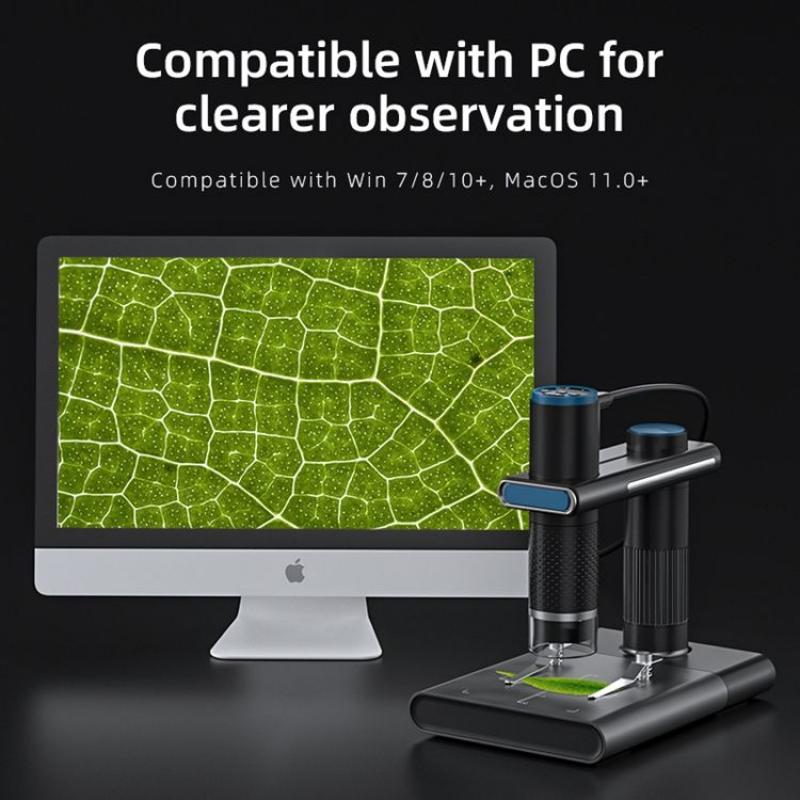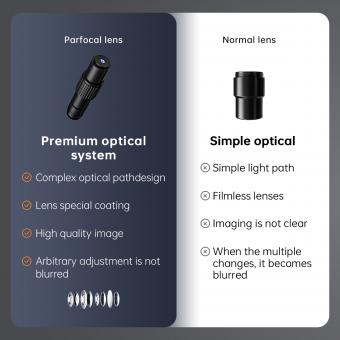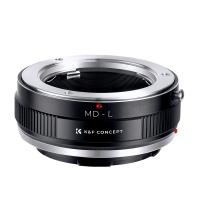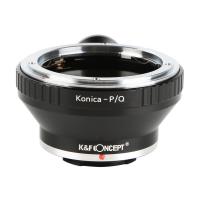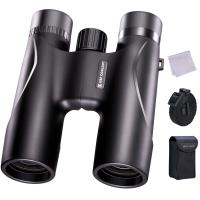What Does The Objective Do On A Microscope ?
The objective on a microscope is a lens or a set of lenses that is responsible for magnifying the specimen being observed. It is located close to the specimen and collects light rays from the specimen and forms a magnified image. The objective lens has different magnification powers, typically ranging from 4x to 100x or higher, allowing the user to view the specimen at different levels of detail.
1、 Magnification: Increasing the size of the specimen for detailed observation.
The objective on a microscope plays a crucial role in magnifying the specimen for detailed observation. Magnification refers to the process of increasing the apparent size of an object, allowing scientists and researchers to examine minute details that may not be visible to the naked eye. The objective lens is responsible for this magnification process.
When light passes through the objective lens, it converges and focuses on the specimen, creating a magnified image. The objective lens is designed with different magnification powers, typically ranging from 4x to 100x or higher. Each objective lens provides a different level of magnification, allowing scientists to choose the appropriate lens based on the level of detail they wish to observe.
The magnification power of the objective lens is often indicated by a numerical value, such as 10x or 40x. This value represents how many times larger the image appears compared to the actual size of the specimen. For example, a 10x objective lens would make the specimen appear ten times larger than its actual size.
In addition to magnification, the objective lens also affects other important factors such as resolution and depth of field. Resolution refers to the ability to distinguish between two closely spaced objects as separate entities. A higher magnification power generally leads to a higher resolution, allowing scientists to observe finer details.
The depth of field, on the other hand, refers to the thickness of the specimen that appears in focus at any given time. Higher magnification powers often result in a shallower depth of field, meaning that only a thin slice of the specimen will be in focus. This can be both advantageous and challenging, as it allows for detailed examination of specific areas but may require adjusting the focus frequently.
In recent years, advancements in microscope technology have led to the development of more sophisticated objective lenses. These lenses may incorporate additional features such as improved coatings to reduce glare and increase contrast, as well as specialized designs for specific applications. For example, some objective lenses are optimized for fluorescence microscopy, allowing scientists to observe specific molecules or structures within the specimen.
In conclusion, the objective on a microscope is responsible for magnifying the specimen for detailed observation. By increasing the size of the specimen, scientists can examine minute details and gain a deeper understanding of the object under study. The objective lens, with its varying magnification powers, plays a crucial role in this process, allowing scientists to choose the appropriate level of magnification for their specific research needs.

2、 Resolution: Enhancing the clarity and sharpness of the image.
The objective on a microscope plays a crucial role in enhancing the clarity and sharpness of the image. It is one of the most important components of a microscope and is responsible for magnifying the specimen being observed. The objective lens is located close to the specimen and is designed to gather light and focus it onto the eyepiece.
The primary function of the objective is to provide magnification. Microscopes are equipped with different objective lenses, each with a specific magnification power. These lenses can range from low magnification (such as 4x or 10x) to high magnification (such as 40x or 100x). By switching between different objective lenses, the user can observe the specimen at various levels of magnification, allowing for a detailed examination of the sample.
In addition to magnification, the objective also plays a crucial role in determining the resolution of the microscope. Resolution refers to the ability of the microscope to distinguish between two closely spaced objects as separate entities. The objective lens, along with the numerical aperture (NA) of the lens, determines the resolving power of the microscope. A higher numerical aperture allows for better resolution, as it allows more light to enter the lens and capture finer details of the specimen.
Advancements in technology have led to the development of objectives with higher numerical apertures, resulting in improved resolution. For example, the introduction of oil immersion objectives has significantly enhanced the resolving power of microscopes. These objectives require the use of a special oil between the lens and the specimen, which helps to minimize the loss of light and increase the numerical aperture, thereby improving resolution.
In recent years, there have been further advancements in objective design, such as the development of apochromatic objectives. These objectives correct for chromatic aberration, which is the distortion of colors that can occur when light passes through a lens. By minimizing chromatic aberration, apochromatic objectives provide a more accurate representation of the specimen's colors, resulting in a higher quality image.
In conclusion, the objective on a microscope is responsible for magnifying the specimen and enhancing the clarity and sharpness of the image. It determines the level of magnification and plays a crucial role in determining the resolution of the microscope. Advancements in objective design have led to improved resolution and image quality, allowing for more detailed observations and analysis in various scientific fields.

3、 Contrast: Differentiating between different parts of the specimen.
The objective on a microscope plays a crucial role in enhancing the clarity and visibility of the specimen being observed. It is responsible for magnifying the image of the specimen and allowing the viewer to see fine details that may not be visible to the naked eye. However, the objective does more than just magnify the image; it also helps in differentiating between different parts of the specimen by enhancing contrast.
Contrast is the difference in brightness or color between different parts of an image. In microscopy, contrast is essential for distinguishing between different structures or components within a specimen. The objective lens helps to enhance contrast by manipulating the light that passes through the specimen.
One way the objective achieves this is by controlling the amount and angle of light that enters the microscope. It can adjust the aperture size, which regulates the amount of light passing through the specimen. By reducing the amount of light, the objective can increase the contrast between different parts of the specimen, making them more distinguishable.
Additionally, the objective lens can also manipulate the angle of light entering the microscope. This technique, known as oblique illumination, involves tilting the light source at an angle to create shadows and highlights on the specimen. This creates contrast and helps to reveal fine details that may be otherwise difficult to see.
In recent years, advancements in microscopy technology have led to the development of specialized objective lenses that further enhance contrast. For example, phase contrast and differential interference contrast (DIC) objectives use optical techniques to enhance contrast in transparent or unstained specimens. These techniques allow for the visualization of structures that would otherwise be invisible under normal brightfield microscopy.
In conclusion, the objective on a microscope not only magnifies the image but also plays a crucial role in enhancing contrast. By differentiating between different parts of the specimen, the objective allows for a more detailed and comprehensive understanding of the microscopic world. With advancements in microscopy technology, the objective continues to evolve, providing researchers with new tools to explore and uncover the hidden intricacies of the microscopic realm.

4、 Numerical Aperture: Controlling the amount of light entering the objective.
The objective on a microscope plays a crucial role in magnifying the specimen and capturing high-resolution images. It is one of the most important components of a microscope and determines the quality and clarity of the observed image. The objective lens is located closest to the specimen and is responsible for gathering light and focusing it onto the eyepiece or camera.
One of the key functions of the objective is to control the amount of light entering the microscope. This is achieved through a property known as numerical aperture (NA). Numerical aperture is a measure of the light-gathering ability of the objective and is determined by the design and characteristics of the lens. A higher numerical aperture allows more light to enter the objective, resulting in a brighter and more detailed image.
Controlling the amount of light entering the objective is crucial for achieving optimal image quality. Too much light can cause overexposure and wash out the details, while too little light can result in a dim and low-contrast image. By adjusting the numerical aperture, the microscope user can optimize the amount of light entering the objective, ensuring a well-balanced and properly illuminated image.
In addition to controlling light, the objective also determines the magnification power of the microscope. Objectives come in various magnification levels, ranging from low power (e.g., 4x or 10x) to high power (e.g., 40x or 100x). The choice of objective depends on the level of detail required and the size of the specimen being observed.
In recent years, advancements in objective lens technology have led to the development of specialized objectives for specific applications. For example, there are objectives designed for fluorescence microscopy, which allow the visualization of specific molecules or structures within a specimen. There are also objectives optimized for high-resolution imaging, enabling researchers to capture intricate details with exceptional clarity.
In conclusion, the objective on a microscope, through its numerical aperture, controls the amount of light entering the objective, ensuring optimal illumination and image quality. It also determines the magnification power and plays a crucial role in capturing high-resolution images. Ongoing advancements in objective lens technology continue to enhance the capabilities of microscopes, enabling researchers to explore the microscopic world with greater precision and detail.
